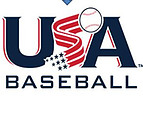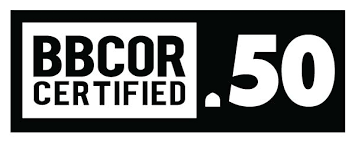There are three bat certifications that may come into play when choosing the proper bat for your player. This age group will likely use the Little League required USA Bat Standard. We will also examine the differences in bat certifications for Little League, travel baseball and high school/ collegiate leagues. Finally, after determining which certification your league recognizes, we present specifications and pricing for the best baseball bats for 7-8 year old players in each certification group.

Little League:
USA Bat Standard
Effective January 1, 2018, USA Baseball, the national governing body for the sport of baseball in the United States, adopted a new method for measuring bat performance for testing youth baseball bats. This new USABat Standard may affect your bat purchase decisions, so we have broken-down every part of the new rule change, including what changes occurred, why a change was made, and who this new standard impacted.
What are the key takeaways regarding these new youth baseball bat rules?
In order to maintain the integrity of youth baseball, the USABat Standard will create wood-like performance in youth bats while allowing younger players to use light-weight bats that could not be achieved with wood bats.
- AABC, Babe Ruth / Cal Ripken, Dixie, Little League, and PONY will all be affected by the USABat rule change, but USSSA will not. Currently, USSSA Baseball will allow the use of a bat that carries the new USABat stamp (as long as barrel diameter, drop weight, material specifications, etc. match the specific division’s requirements).
- AAU will vote on whether or not to adopt the USABat Standard in the Fall.
- USABat will not have a drop weight limit.
- USA Baseball will allow the use of 2 big barrel bats for all age levels.
- BBCOR bats are permitted for Intermediate (50-70) Division and Junior League Division, but must be labeled with a silkscreen or other permanent certification mark.
What will the USABat Standard change and why?
Similar to the NCAA and NFHS BBCOR Standard that was implemented in 2011, the new USABat Standard will create wood-like performance in youth baseball bats. Or, as USA Baseball’s Executive Director / CEO Paul Seiler stated, help “take another step forward in making our game more uniform at the youth level and ensuring the long-term integrity of the game.” Like the NCAA bat performance tests, the USABat Standard is based on the coefficient of restitution from a bat-ball impact. But in order to address the varying levels of play between youth and high school / collegiate players, the USABat test will use different test balls and test speeds to scale the results. The BBCOR regulation limits bats to a maximum value of .50 in the NFHS / NCAA test. Currently, the maximum value that these new youth bats will be allowed to acheive, or how that value would exactly compare to the trampoline effect achievable with a BBCOR / current youth baseball bat / wood bat, is not known.
But, unlike the -3 length-to-weight ratio restriction that is required for BBCOR bats, USABat will not have a drop weight limit. Instead of requiring the use of wood bats, which are often found with a -8 length-to-weight ratio at the lightest, younger players will still be able to use bats made from light-weight, highly engineered materials.
With the creation of the new standard, players within the affected organizations will also now be allowed to use bats with either a 2 or 2 barrel diameter, as long as they carry the new USABat stamp.
Provided by: Just Bats

Travel Baseball Leagues
(Governed by USSSA)
USSSA Baseball Bat Standard
The USSSA Baseball Bat standards have not changed since 2005. They continue to require a 1.15 BPF certified thumbprint stamp of approval on the taper of all eligible bats. There can be exceptions that we will touch on, however as a general rule-of-thumb if you are allowed to use a USSSA bat – use it. A change did occur on January 1, 2018, with the USA Bat Standard, however, the change did not impact USSSA certified baseball regulations.
USSSA regulations are generally utilized for tournaments or “travel ball.” They provide a performance advantage over alternative options such as USA, BBCOR, and Wood Bats. Another competitive advantage provided by a USSSA bat can potentially be found in the barrel size. While USABats and BBCOR models enforce a maximum barrel diameter of 2 ⅝”, USSSA does not follow suit. USSSA models can have a barrel as large as 2 ¾” to provide a larger hitting surface and, in turn, more confidence for each player.
USSSA Bat Rules
- Must have the 1.15 BPF USSSA stamp on the taper OR
- Have the Certified .50 BBCOR stamp (-3) OR
- Be a Wood Bat
- Barrel diameter cannot exceed 2 ¾”
- All must be manufactured by an approved USSSA bat manufacturer*
What is USSSA Baseball?
USSSA, or United States Specialty Sports Association, is a governing body for youth baseball. Often times the term ‘USSSA’ will be synonymous with ‘travel ball’ or ‘tournament baseball’ because most tournaments around the country abide by USSSA’s rules. Their primary goal is to coordinate opportunities for teams to compete in both leagues and tournaments around the world. They seek to promote a high-quality brand of baseball to directly engage younger players in the sport.
Can I Use a USA Bat in USSSA Play?
Yes. You are allowed to use a USA Baseball Bat in USSSA certified play, but we do not recommend that you do. The reason is that the performance difference between the two certifications is sizable. USA models will be substantially lower performing bats when directly compared to USSSA models. This is the result of the restrictions placed on USA Baseball Bats to lower their performance. USSSA was not impacted by the rule change and continues to have the highest performing youth baseball bats available.
Provided by: Just Bats
High School and Collegiate Play:

BBCOR Certification
BBCOR (Bat-Ball Coefficient of Restitution) is something you’ve probably heard a lot about; it’s the standard currently governing adult baseball bats used in High School and Collegiate play. Rather than measuring the ratio of the ball exit speed to pitch and bat speeds, BBCOR measures the trampoline effect of the bat. In the past, when a pitched ball made contact with an alloy or composite bat, the barrel would flex inward ever so slightly, and the ball would retain some of its energy resulting in further hits. Wood baseball bats don’t have as much “give” to them, and the ball loses much of its energy upon impact. The BBCOR standard ensures that non-wood bats perform more comparably to wood bats in an attempt to level the playing field and improve player safety.
All BBCOR baseball bats will carry the “BBCOR Certified .50” mark (pictured above) somewhere on their barrel or taper. Additional requirements for a bat to become BBCOR Certified include a length to weight ratio that is no greater than -3 and a barrel diameter that does not exceed 2”. So the answer to the very common question “Where can I find a BBCOR bat that has a -5 length to weight ratio?” is that “Those regrettably do not exist. All BBCOR bats are required to be -3 or heavier”. As a result of being a standardized drop weight, the main difference with these models is their swing weights. The swing weight is how heavy the bat “feels” when swung. A bat with more of the weight towards the end is referred to as an “end-loaded” bat and will be geared towards power hitters. A bat with a more traditional contruction will be referred to as “balanced” and generally will be used by contact hitters.
Provided by: Just Bats
Please visit my other baseball equipment pages for 7-8 year old players by clicking the following links:
- Baseball gloves for 7-8 year old players
- Batting Helmets for 7-8 year old players
- Cleats for 7-8 year old players
- Bat Packs for 7-8 year old players